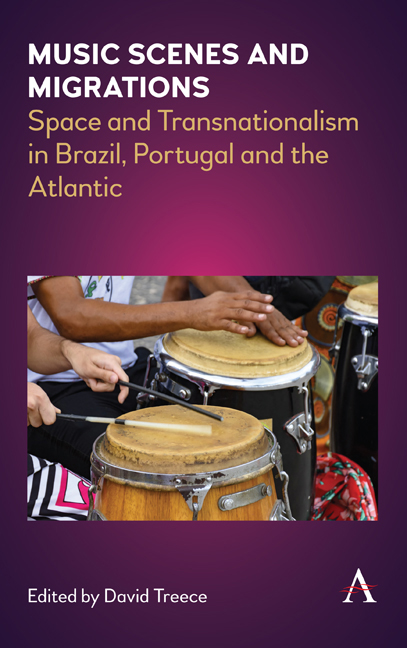Book contents
- Frontmatter
- Contents
- List of Illustrations
- Acknowledgements
- Introduction
- Part 1 Colonial and Postcolonial Transnationalisms, Migrations and Diasporas
- Part 2 Relocating Rio de Janeiro
- Part 3 Demetropolitanizing the Musical City: Other Scenes, Industries, Technologies
- Notes on Contributors
- Notes
- References
- Index
Chapter 1 - The Cimboa and Cape Verdean TransculturalHeritage
Published online by Cambridge University Press: 20 January 2022
- Frontmatter
- Contents
- List of Illustrations
- Acknowledgements
- Introduction
- Part 1 Colonial and Postcolonial Transnationalisms, Migrations and Diasporas
- Part 2 Relocating Rio de Janeiro
- Part 3 Demetropolitanizing the Musical City: Other Scenes, Industries, Technologies
- Notes on Contributors
- Notes
- References
- Index
Summary
Bowed stringed lutes, and among them the one-stringedfiddle, are one of the counterhegemonic culturalpractices that have mediated critical, decolonialperspectives in the former Portuguese empire. Theyare an example of how musical objects can functionas ‘instruments of agency’ (Bates 2012) in theinteractions between people and their materialworld, and of how, through processes of revival andreinvention of traditional practice, such agency cangive rise to modern creole identities. Taking onesuch case, this chapter examines the materialculture of the Cape Verdean cimboa, exploring its likely connectionswith practices in continental Africa, and thesignificance of the revivals it has undergone incontemporary Cape Verde and Brazil.
The Cape Verdean one-stringed bowed lute, or cimboa, can be found todayin the interior of the island of Santiago, where itis associated with dances of the archipelago andautochthonous rhythms such as the batuku. The municipality ofSão Domingos, a site of traditional batuku practices, was hometo the renowned singer Ntóni Denti d’Oro, thecimboa player ManoMendi and his apprentice Pascoal Fernandes, who inrecent years has extended fiddle practice acrossother genres in an attempt to legitimize its revival(Bithell and Hill 2014). Considering one-stringedfiddles and their geographical distribution inAfrica, and based on the instrument'scharacteristics as defined by Jacqueline Djedje(2008), I speculate that the cimboa could be a Cape Verdeanrecreation of the Gambian Fulbe nyanyeru or riti. This essay also draws onethnographic data from the narratives of Brazilianmusician Gentil do Orocongo, to posit a link betweenhis one-stringed bowed lute and the Cape Verdeancimboa.
African fiddles spread to diverse regions as enslavedpeoples who were forcibly displaced from thecontinent managed to take knowledge of some of theirartefacts with them, including their musicalinstruments. As a consequence, these instrumentsshould not be regarded simply as the artefacts of aparticular material culture; they are not onlyrepresentative of that culture but are themselvesagents in the encounter between different culturaltraditions. The narratives provided by myinterviewees support the idea that the cimboa has been put to newuses in contemporary Cape Verde.
- Type
- Chapter
- Information
- Music Scenes and MigrationsSpace and Transnationalism in Brazil, Portugal and the Atlantic, pp. 11 - 20Publisher: Anthem PressPrint publication year: 2020



